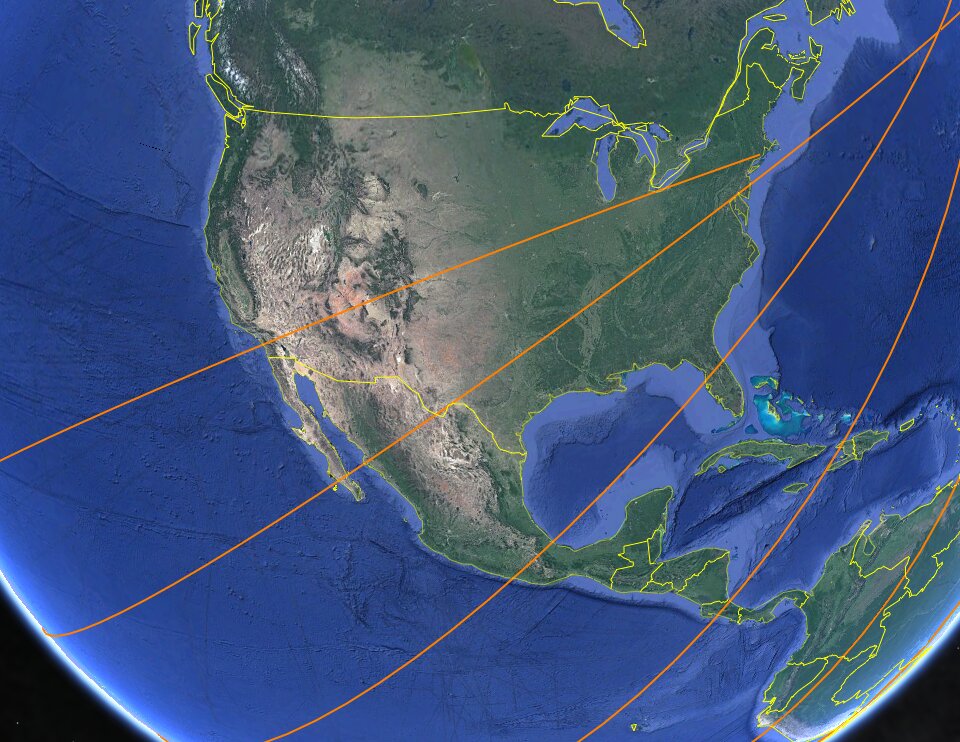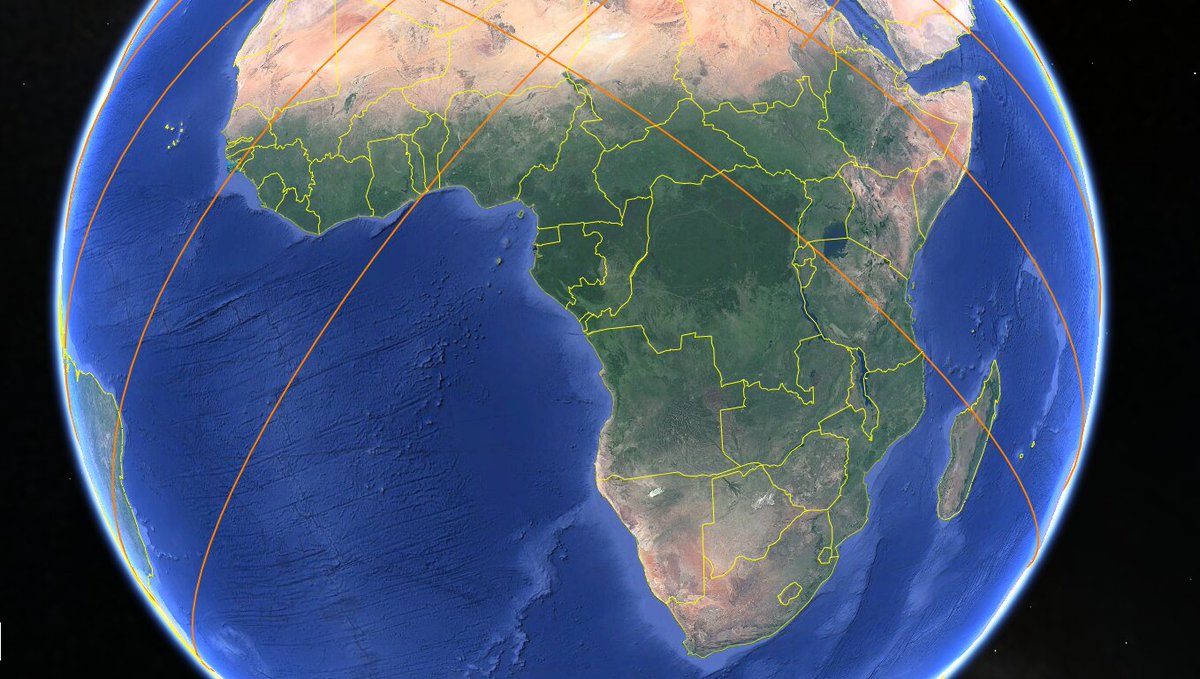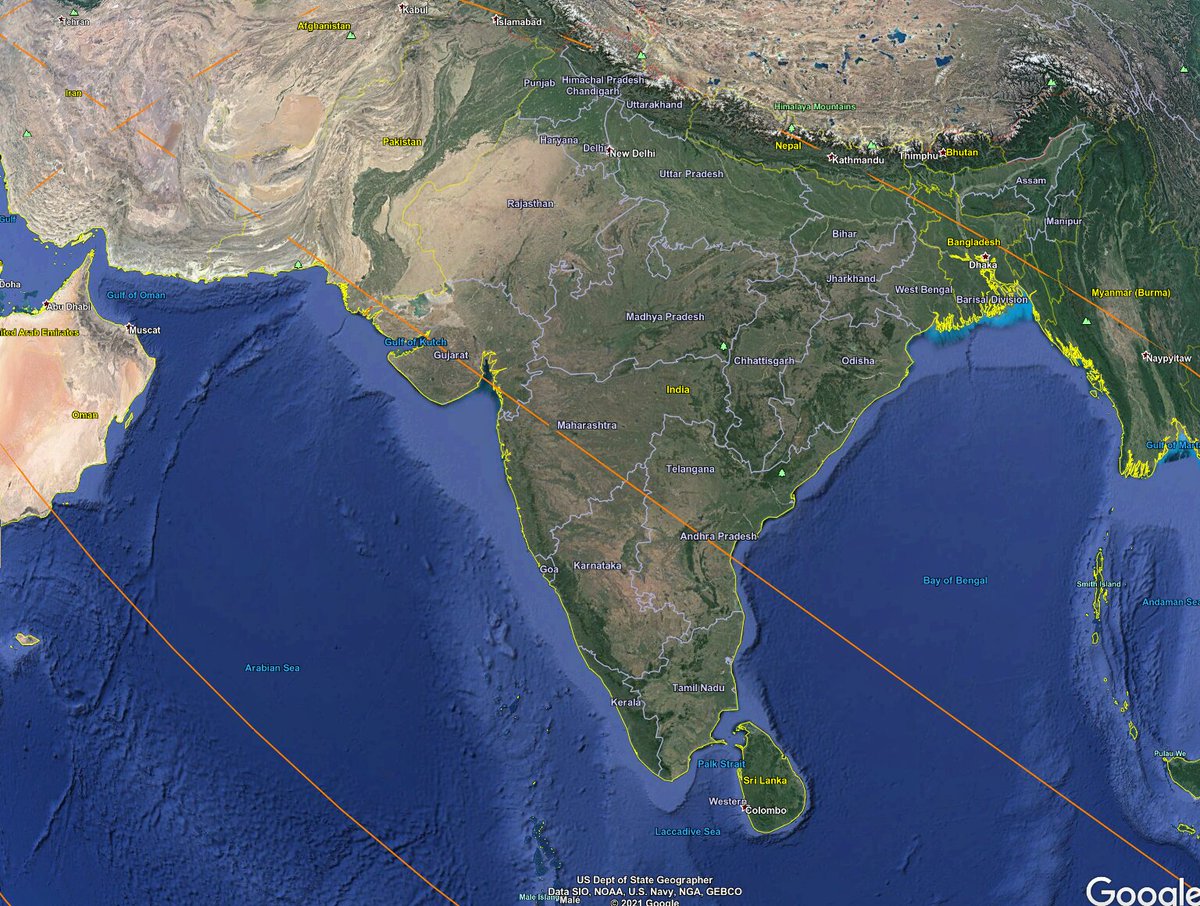
In the night sky, most of you probably know the constellation of Ursa Major ("the Great Bear", "the Plough", "the Big Dipper"). The tail of the bear, or handle of the plough/dipper, ends in an arc of stars: Alioth, Mizar and Alkaid [Photo: A. Fujii via SkyandTelescope] 

Amateur astronomers soon learn to find the bright northern stars Arcturus and Spica with the rhyme: 'Arc on to Arcturus, Speed on to Spica' (diagram via EarthSky.org) 

(Hang on, I am notorious for my long tweet streams. This one is going to be a ride.)
Arcturus is a red giant star 37 light years away; it is the brighest star in the constellation Bootes (pronounced Boo-ooh-tees)
7 degrees north of Arcturus is a faint blue dot - a 14th magnitude (1000 times too faint to see with the naked eye) starlike object.
It turns out this object which looks like a blue star is actually not a star at all. It's 10 billion light years away and what we're seeing is the light from gas swirling into a 10-billion-solar-mass supermassive black hole - a quasar. It was discovered by Richard Green in 1983
This quasar's name is PG1407+265. It's weird even for a quasar. Here's its location on a map of the Bootes area. 

I studied this quasar as one of 50 in the Atlas of Quasar Energy distributions I coauthored with @martinselvis2 @BelindaWilkes and a bunch of other people in 1994. Its weirdness led me to study it more deeply, in a paper I wrote in 1995 (with, among others, @ProfSeraMarkoff)
@martinselvis2 @BelindaWilkes @ProfSeraMarkoff A quarter of a century later I am still trying to unravel this object's mysteries. Today my new paper, in which I join Matt Ashby, @Aki1Star, @Prof_Katherine and Luigi Gallo in using Chandra and the MMT to probe this alien object more deeply, is on arxiv: arxiv.org/abs/2106.05389
Here a zoom in on that bit of Bootes. PG1407+265 would only barely be visible here if I hadn't marked it with the red cross 

Here's a zoom in further, with the Sloan Digital Sky Sruvey. PG1407+265 is the white blob near the middle (labelled 'PG') - it looks no different at first sight from star 72 at the left but it is a hundred million times further and a billion trillion times more luminous 

But the picture changes if you look at it with an X-ray telescope - which we did in 1981 with the Einstein space telescope. PG1407+265 is super bright in X-rays. It's also pretty much booming in ultraviolet light.
And yet... most quasars show strong 'broad emission lines' - they are brighter in particular colors that are the fingerprints of elements like hydrogen, carbon, magnesium, but those colors show 'Doppler shifts' that indicate the light comes from gas orbiting something REALLY FAST
By 'really fast' we mean about 10000 km/s, or a few percent of the speed of light. Because SOMETHING (spoiler: humungous black hole) is tugging on them super hard.
Most quasars have these lines. But we couldn't find them at first in PG1407. They turn out to be there but much fainter than usual, and shifted in color in a way that implies not only are they orbiting real fast, but also flowing out in a super fast wind away from the black hole
I explored this in my 1995 paper
which established PG1407+265 as the prototype of a new class of 'weak
line quasars' - a bunch of others have been discovered since, especially
by Niel Brandt and his colleagues at Penn State University
which established PG1407+265 as the prototype of a new class of 'weak
line quasars' - a bunch of others have been discovered since, especially
by Niel Brandt and his colleagues at Penn State University
In 2001 the European X-ray observatory XMM-Newton took a picture of PG1407+265, and several papers were published looking at its X-ray output. But no-one looked really carefully at the pictures until in around 2011 I took my own look. 

Do you see that the quasar (the bright middle object) looks a bit lopsided?There's more stuff to the left than the right. Yeah? Convinced? No, nor was I - it could be just the fuzziness of XMM's telescope rather than something real. I needed an X-ray telescope with sharper vision
There is only one X-ray telescope with sharper vision. It's name is Chandra, and it was launched in 1999. The good news is that I happen to be on the Chandra team. The bad news is that that doesn't get me any special access to using it...
The next 5 years were like:
Jonathan: "Please can I have one day of Chandra time to look at this?" Time allocation committee: "Nope". Jonathan: "Please can I have one day of Chandra time to look at this?" Time allocation committee: "Nope".
(repeat ad nauseam...)
Jonathan: "Please can I have one day of Chandra time to look at this?" Time allocation committee: "Nope". Jonathan: "Please can I have one day of Chandra time to look at this?" Time allocation committee: "Nope".
(repeat ad nauseam...)
Finally:
Jonathan: "Please can I have HALF A DAY of Chandra time to look at this?" Time allocation committee: oh, all right Jonathan, if it will shut you up, here you go.
Jonathan: "Please can I have HALF A DAY of Chandra time to look at this?" Time allocation committee: oh, all right Jonathan, if it will shut you up, here you go.
The quasar is the bright white spot at right center. But what's this big colored blob in the center? The pinkish color indicates that temperature of the blob is a little cooler than the quasar or the blue objects; it's a mere 35 million degrees (K, or deg C, take your pick)
The other starlike points are probably even more distant quasars that happen to be in the same direction in the sky; we haven't followed them up yet.
We spent the next couple years gathering more information on the blob, including getting optical spectra from our big MMT telescope in Arizona. We guessed the blob is hot gas in a cluster of galaxies - but we were surprised it turned out to be not as far away as the quasar
The quasar is 10 billlion light years away (comoving, standard cosmology, blah blah) but the cluster of galaxies - according to official rules glorying in the name of CXOU J140927.9+261813, sorry about that - is a mere 8 billion light years away.
The cluster's mass is a few hundred trillion times the mass of our solar system. Here I show contours of the X-ray gas cloud superimposed on the individual galaxies seen in a Hubble image of the field. Blue circles are galaxies whose distance we measured with the MMT 

The fact that the cluster is almost in the same direction as the quasar made us wonder if its enormous gravity could be distorting - 'gravitationally lensing' the light from the quasar, explaining some of its weirder behavior (that I won't go into here)
But our estimate of the cluster's mass suggests it's not quite heavy enough to do this (the quasar is outside the cluster's 'Einstein radius').
But again... our mass estimate is pretty uncertain because we only got half a day of data from Chandra, collecting about 350 X-ray photons from the cluster. We need more data! And we are asking for more data. Chandra peer review committee, please please please be nice to us
Anyway, that's what I've been up to lately when not tweeting about local things like Earth satellites! FInally I'd like to publicly thank my fabulous coauthors Matt, Aneta, Luigi and Katherine for being collegial, insightful, and above all patient.
• • •
Missing some Tweet in this thread? You can try to
force a refresh







